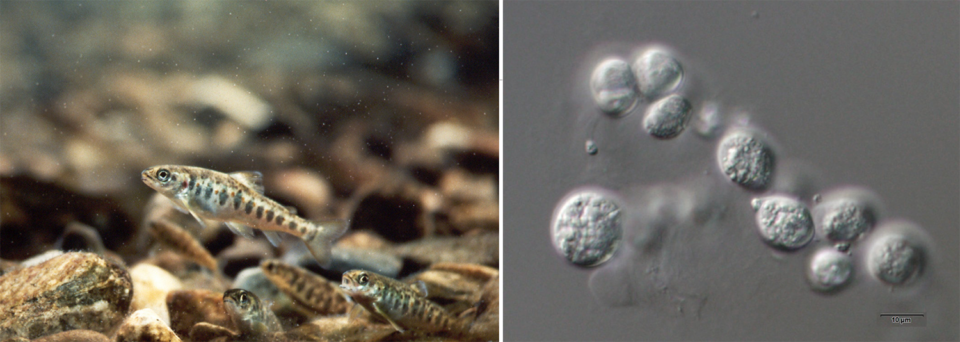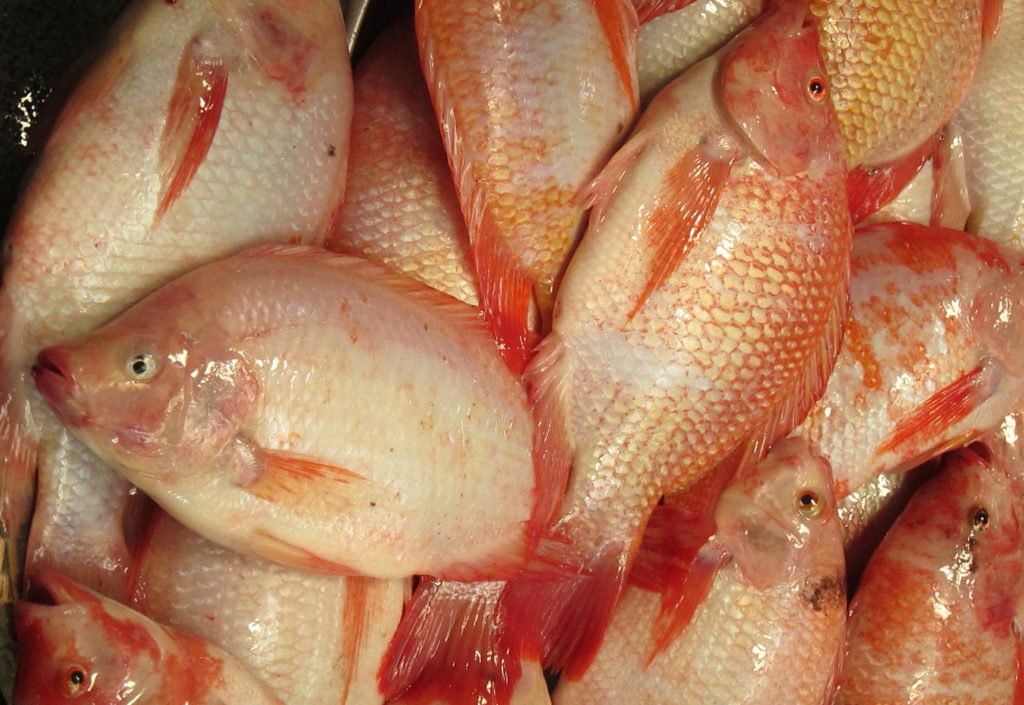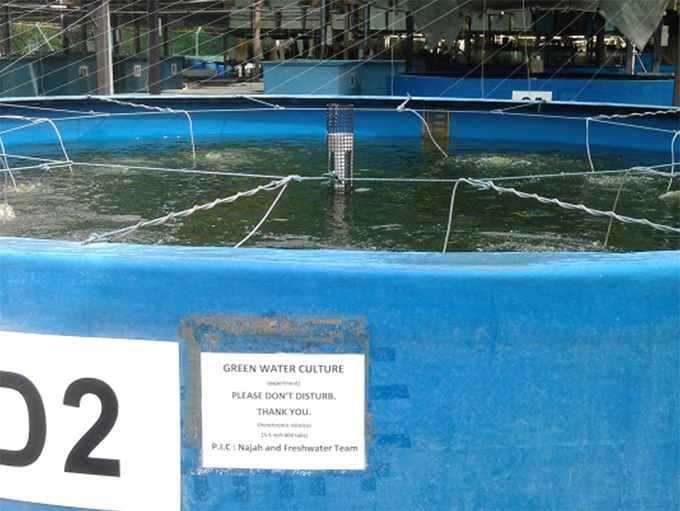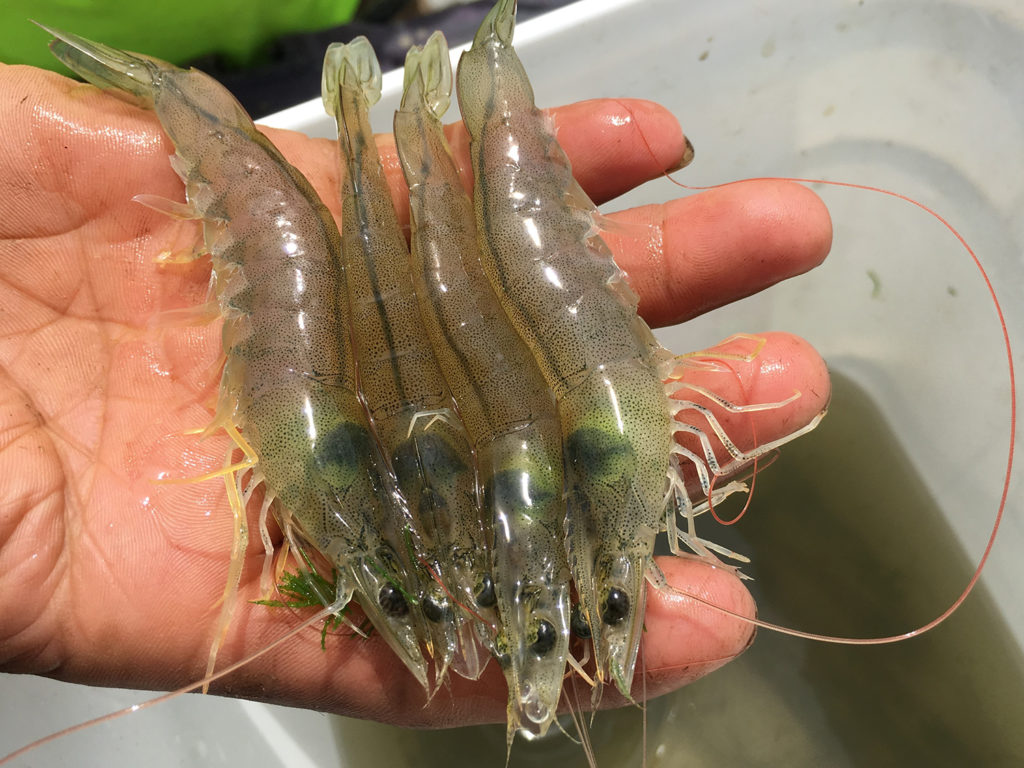Results show the addition of Schizochytrium limacinum improved fish growth and fillet quality when used long-term

Novel sustainable sources of high-quality proteins and oils rich in omega-3 fatty acid (long-chain omega-3 polyunsaturated fatty acid, omega-3 LC-PUFA) are needed as wild fisheries resources exploited for fish oil and fishmeal production reach sustainability limits. In salmon feeds, much fishmeal is now largely substituted with different plant protein sources, but there are fewer commercial alternatives when it comes to dietary omega-3 LC-PUFA sources.
In recent years, large-scale fermentation technology has been used for the commercial production of non-genetically modified, heterotrophic, microalgae-like unicellular organisms such as Schizochytrium limacinum and similar organisms, for both biofuel and other food and feed applications including fish feeds. S. limacinum biomass contains high levels of fat (55 to 75 percent, dry matter) and docosahexaenoic acid (DHA) (up to 49 percent of total lipids), and is reported as a good DHA-rich lipid source in diets for farmed sea bream (Sparus aurata) and Atlantic salmon (Salmo salar), even at 100 percent replacement of the supplemental dietary fish oil.
This article – adapted and summarized from the original publication (Kousoulaki, K. et al. 2020. Microalgal Schizochytrium limacinum Biomass Improves Growth and Filet Quality When Used Long-Term as a Replacement for Fish Oil, in Modern Salmon Diets. Front. Mar. Sci. 7:57.) – presents results of a life-long study on Atlantic salmon fed practical diets with low levels of fishmeal and either fish oil or whole S. limacinum biomass as supplementary dietary omega-3 LC-PUFA source.
https://www.aquaculturealliance.org/advocate/integrated-utilization-microalgae-aquaculture-wastewater/
Study setup
Three Atlantic salmon diets were formulated based on the trends on average raw material levels and nutrient values used in salmon feeds by the three major salmon feed producers in Norway. The experimental diets were formulated to contain 1 to 1.25 percent of the omega-3 fatty acids eicosapentaenoic acid (EPA) + DHA and were further balanced for crude protein, crude lipid, digestible energy, omega-3/omega-6 fatty acid ratio, and other values using different oil blends and plant protein mixes. Dietary omega-3 LC-PUFAs were supplemented with fish oil (FO), S. limacinum biomass (ScB), or a mix of the two (FO/ScB).
The fish oil diets were the control diets containing low (10 percent) fishmeal inclusion, and fish oil as supplementary omega-3 LC-PUFA source. The FO/ScB diets, used only in the tank phase trials, also contained 10 percent fishmeal and a mix of fish oil and S. limacinum biomass, the latter providing 50 percent of total EPA + DHA in the diets, whereas the ScB diets contained only S. limacinum biomass as supplementary omega-3 LC-PUFA source, besides the respective dietary contribution of FM. A commercial, whole and spray dried S. limacinum biomass (Alltech Inc., United States) was used in these diets.
The trial period was started in tanks and lasted approximately 11 months. During the tank phase, individually-tagged fish were fed one of three experimental diets (FO, FO/ScB, or ScB) in triplicate tanks and were weighed and samples were taken for tissue analyses from 10 fish per tank four times: at the start (ca. 18 grams fish mean body weight, BW), soon after smoltification [complex series of physiological changes where young salmonid fish adapt from living in freshwater to living in seawater] at ca. 60 grams BW, at ca. 200 grams BW and at ca. 800 grams BW.
At the end of the tank phase of the trial all fish were mixed and transferred to the cage facilities of Marine Harvest at Averøy, Norway, where they were distributed by equal representation of fish from each tank into each of six trial sea cages and reared on either FO or ScB diets in triplicate for over one more year. This was done to detect early life and dilution effects of variable dietary levels of DHA, EPA and feeding salmon relatively high levels microalgae biomass as a replacement for fish oil. At the end of the cage phase, the fish had mean BW of ca. 2,800 to 3,300 grams.
For detailed information on the formulation and chemical analyses of the experimental feeds; fish feeding trials in the tank and sea cage phases; collection and analyses of fish samples; sensory analysis; skin coloration; histological observations and other analyses; and statistical analyses, refer to the original publication.
Results and discussion
The main findings of this study are related to (1) the significantly positive effect on fish growth and apparent digestibility coefficient, ADC [which reflects the percent of a nutrient retained by the animal] of the ScB diet during the sea phase of the trial compared to the FO treatment; (2) differential dietary physiological effects on body lipid fatty acid composition, liver composition, and intestinal function; and (3) positive ScB effect on Atlantic salmon filet coloration.
The experimental groups showed growth performance differences only during the last phase of the study, namely during the sea cage phase, when fish fed the ScB diets reached significantly higher final body weight compared to the FO fish. Fish in the ScB dietary treatment grew to significantly higher body weight by the end of the experiment (2.8 kg vs. 3.3 kg, for FO and ScB diets, respectively) but had similar FCR and survival rates, and biometric indexes compared to the FO groups.
In our study, the best performing diet (ScB) had much higher DHA/EPA ratio and we did not see any significant differences in total mortalities or fish robustness. Improved growth in the ScB treatment appears to be related to metabolic and behavioral effects leading to higher feed intake rates. In the ScB diets we used whole cell S. limacinum biomass, which in contrast with extracted oils and plant concentrates, is expected to contain a great number of functional components. Although our diets were balanced to cover the known basic nutritional needs of the fish, the additional contributions of nucleotides, minerals, phospholipids, vitamins and cell wall components from S. limacinum biomass may have contributed to improved intestine function during the most stressful growing period for the fish, which included several handling incidences for the removal of parasitic sea lice.
Regarding the assimilation of fatty acids in whole fish and fillets, the lipid fatty acid composition of our Atlantic salmon fillets mostly reflected the composition of the experimental diets. Nevertheless, though the diets were balanced for total saturated fatty acids (SFA) and EPA + DHA, at slaughter fish fed the FO diet had higher levels of SFA and lower levels of EPA + DHA compared to the ScB-fed fish. In terms of total retention efficiency, the fish fed the FO diet had much lower retention efficiency of EPA and higher DHA compared to fish fed the ScB diet.
Fish fed the ScB diet contained higher levels of EPA + DHA in their fillets but lower levels in their livers, and already had better fillet pigmentation from the tank phase of the experiment as determined chemically, by commercial color and by a trained sensory panel, and lower prevalence of melanin spots at slaughter. The trained sensory panel found no differences in flavor or odor in the fillets from the different dietary groups; however, fillets in the FO group were perceived as softer and juicier compared to ScB.
Our results also showed that dietary S. limacinum biomass had a positive effect on Atlantic salmon fillet pigmentation, in terms of increased redness coloration, reduced paleness and reduced melanin spots in the fillets of the fish after processing. We believe that intestinal uptake facilitation and the antioxidant effect provided by some components of the dietary S. limacinum – such as vitamins, organic selenium and DHA – may have contributed to these effects.
Assimilation of astaxanthin in salmon is reportedly poor, increasing the need for dietary supplementation, which in turn significantly increases the formulation costs. Improved deposition of the supplemented astaxanthin by use of S. limacinum biomass in the diet, in combination with the positive effect on growth we observed, could make the use of this natural alternative source of marine omega 3 fatty acids economically viable.
As for intestinal histology, no diet-related differences were observed between the ScB and FO dietary groups, indicating no specific adverse effect on intestinal development in relation to long-term feeding of ScB compared to FO.
Perspectives
Based on our results, S. limacinum biomass appears to be a good alternative source of marine omega-3 fatty acids for Atlantic salmon, particularly during stressful conditions, resulting in improved growth, indications of anti-inflammatory effects in the intestine based on gene expression data, and improved fillet pigmentation tested both chemically and by a sensory panel.
However, it is important to cover the fish requirement for total omega-3 fatty acids, and in our study, there were indications that the dietary levels of EPA + DHA used (ca. 1.3 percent) were inadequate for both groups, but particularly for the faster-growing S. limacinum dietary group.
Overall, it appears that S. limacinum biomass can be used in feeds for Atlantic salmon throughout the whole production cycle, from parr (early life stage in freshwater) to harvest size, without any negative effects on growth or product quality if the dietary requirement for EPA is satisfied. Lastly, we observed that the lifelong use of S. limacinum biomass affects the texture but not the taste or smell of salmon fillets.
Now that you've reached the end of the article ...
… please consider supporting GSA’s mission to advance responsible seafood practices through education, advocacy and third-party assurances. The Advocate aims to document the evolution of responsible seafood practices and share the expansive knowledge of our vast network of contributors.
By becoming a Global Seafood Alliance member, you’re ensuring that all of the pre-competitive work we do through member benefits, resources and events can continue. Individual membership costs just $50 a year.
Not a GSA member? Join us.
Author
-
Katerina Kousoulaki, Ph.D.
Corresponding author
Norwegian Institute of Food, Fisheries and Aquaculture Research (Nofima)
Tromsø, Norway
Editor’s note: The original publication has nine co-authors.
Tagged With
Related Posts

Aquafeeds
Comparing microalgae-blend diets to reference diet for Nile tilapia
Nutritional study with Nile tilapia compared three microalgal diets to a reference diet containing fishmeal and fish oil levels found in commercial feed.

Aquafeeds
Green water meal has potential as aquafeed ingredient
Green water, which describes the typical water color in tropical aquaculture facilities, consists mainly of various phytoplankton species along with bacteria, protozoa and zooplankton. It is relatively easy to produce without any supplemented nutrients.

Aquafeeds
Study replaces dietary fish oil with microalgal oil
Study compares the response of Pacific white shrimp fed microalgal oil-based diets and assessed their ability to withstand a Vibrio parahaemolyticus challenge.

Aquafeeds
Aquafeed moonshots at the F3 ‘talent show’
At the F3 (fish-free feed) Companies Got Talent event in Burlingame, Calif., last week, alternative (non-marine) aquafeed ingredient companies spoke of decoupling aquaculture from fishmeal and fish oil in their quest for greater sustainability.



